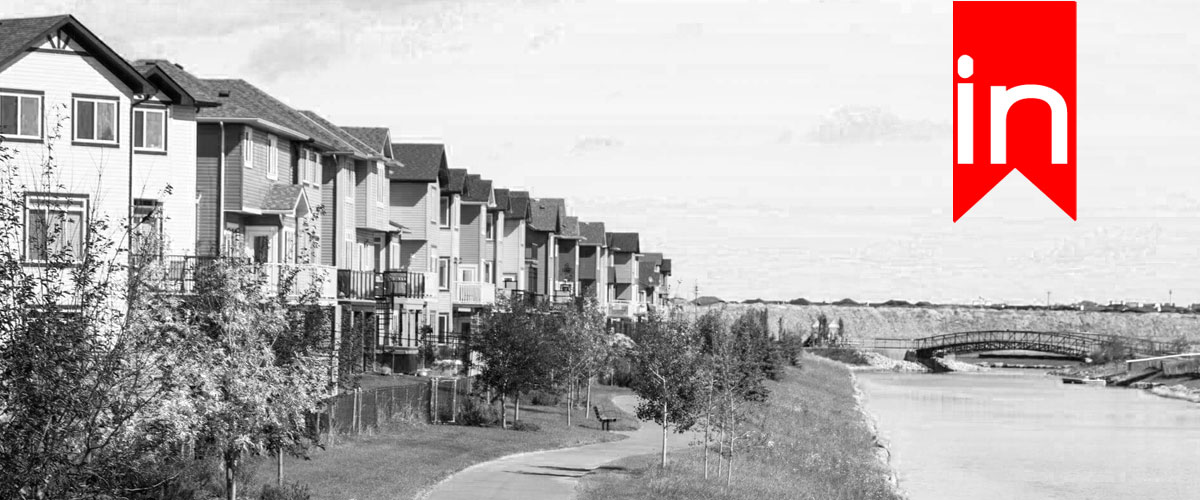Blue Zone communities have gained attention in recent years for their high concentration of centenarians and the healthy habits of their residents. These areas, identified by National Geographic explorer Dan Buettner, are renowned for their exceptional longevity and overall well-being. Notable Blue Zones include regions of Japan, Italy, Costa Rica, Greece, and the Seventh-day Adventist community in Loma Linda, California. In Canada, there is a growing interest in understanding and adopting the principles of these communities, leading to significant benefits for seniors in particular.
The foundation of Blue Zone communities often revolves around their residents’ lifestyle, social interactions, and dietary habits. These factors contribute to the maintenance of physical, mental, and emotional health as people age. In Canadian communities that follow Blue Zone principles, seniors can reap the rewards of better health, increased life satisfaction, and a stronger support network.
While Canada has a pilot project for a Blue Zone community, it does not yet have an officially recognized Blue Zone community. However, lessons from those that do exist can be applied and adapted to suit the nation’s unique cultural and environmental landscape. By fostering a sense of belonging, promoting healthy habits, and encouraging intergenerational connections, Canadian communities can create an ideal environment for seniors to thrive and set an example for others to follow.
Highlights
- Blue Zone communities, celebrated for their residents’ long lives and good health, inspire Canadian initiatives to enhance seniors’ well-being by adopting similar lifestyles, emphasizing social bonds, physical activity, and plant-based diets.
- The Power 9 principles from Blue Zones, such as maintaining a healthy diet and engaging in regular, natural exercise, offer a blueprint for Canadian communities to improve health outcomes and extend the life expectancy of seniors.
- Canada’s exploration of Blue Zone principles, particularly in pilot communities like Airdrie, Alberta, demonstrates the potential for adopting these healthful living practices nationwide, promising significant benefits for senior citizens’ health, community engagement, and overall quality of life.
The Concept Of Blue Zones
Origins And Research
The term “Blue Zone” was coined by Dan Buettner, a National Geographic Fellow, to describe specific geographical areas where people live measurably longer, healthier lives. Buettner, working with researchers and demographers, identified these regions with higher proportions of centenarians and lower rates of chronic diseases. The Blue Zones research aimed to uncover the secrets of longevity and well-being, providing insights into lifestyle, diet, physical activity, and social networks that contribute to these communities’ exceptional health.
The Power 9 Principles
The research team identified a set of common lifestyle characteristics among Blue Zone inhabitants, known as the “Power 9.” These habits include a plant-based diet, regular physical activity, a strong sense of purpose, healthy social networks, and stress management techniques. By adopting the Power 9 principles, individuals and communities can potentially improve their overall health, increase longevity and experience a higher quality of life.
The Power 9 Principles are a set of lifestyle and cultural factors that have been associated with longevity and health in certain regions known as “Blue Zones.” Blue Zones are areas around the world where people tend to live longer and healthier lives. These principles were identified by Dan Buettner, a National Geographic fellow and author, after researching and studying these communities. The Power 9 Principles are as follows:
- Move Naturally: Blue Zone residents engage in regular physical activity through daily routines that involve walking, gardening, and other forms of low-intensity exercise. They don’t typically engage in structured, high-intensity workouts.
- Purpose: Having a sense of purpose or reason for waking up in the morning is believed to contribute to longevity. This could be driven by work, family, hobbies, or a combination of factors.
- Downshift: Blue Zone communities tend to have lower stress levels, and residents take time to relax and unwind. Strategies like meditation, prayer, napping, and regular socializing are common practices to reduce stress.
- 80% Rule: People in Blue Zones follow the practice of “Hara Hachi Bu,” which means eating until they are 80% full. This helps control calorie intake and encourages mindful eating.
- Plant Slant: The majority of the diet in Blue Zones is plant-based. Residents consume a variety of fruits, vegetables, legumes, and whole grains. Meat, especially red meat, is typically eaten in smaller quantities and less frequently.
- Wine at 5: In some Blue Zones, particularly in regions of Italy and Greece, moderate alcohol consumption, typically in the form of red wine, is common. It is often consumed in the company of friends and family.
- Belong: Strong social connections and a sense of belonging are important in Blue Zone communities. Residents maintain close-knit social networks and often prioritize spending time with family and friends.
- Loved Ones First: Family and loved ones are a top priority in Blue Zones. Elders are often respected and cared for by their families, and they remain an integral part of the community.
- Right Tribe: Surrounding oneself with a supportive social circle that encourages healthy behaviors can have a positive impact on longevity. In Blue Zones, people tend to have friends who share similar values and healthy habits.
Offical Global Blue Zones Locations
Five locations worldwide have been identified as Blue Zones: Sardinia in Italy, Okinawa in Japan, Nicoya in Costa Rica, Loma Linda in the United States, and Ikaria in Greece. These regions are characterized by strong social networks, predominantly plant-based diets, high levels of physical activity, and a sense of purpose among their inhabitants. These factors, combined with relatively low rates of chronic diseases, contribute to the remarkable longevity found in these communities.
- Greece: Ikaria (Icaria)
- Japan: Okinawa
- Italy: Nuoro (Sardinia)
- Costa Rica: Nicoya Peninsula
- United States: Loma Linda, California
Please note that these Blue Zone regions are often specific areas within these countries known for their longevity, and the lifestyles and dietary habits can vary even within these regions.
Blue Zones In Canada
Airdrie, Alberta Is A Promising Blue Zone Community
Airdrie, a city located in the Canadian province of Alberta, has been recognized as a promising Blue Zone community. Blue Zones are areas where people have a higher chance of living longer, healthier lives due to a combination of factors like diet, exercise, and strong community connections. The city of Airdrie is striving to become a model Blue Zone community, with initiatives focusing on promoting healthy lifestyles and social well-being among its residents.
The Role of Abrio Health in Blue Zones
Abrio Health plays a significant role in the development of Blue Zones in Airdrie, Alberta. As a not-for-profit organization dedicated to improving community health, Abrio Health collaborates with various partners such as Alberta Blue Cross and Alberta Health Services to develop and implement health-promoting strategies. The organization’s Board Chair, Stan Grad, is committed to the Blue Zone concept and supports initiatives aimed at encouraging people to adopt healthier lifestyles, reducing the risk of chronic diseases.
Community Engagement
Community engagement is a critical aspect of Blue Zone communities as it contributes to improved social connections and overall well-being. Engaged community members are more likely to participate in health-promoting activities and forge strong bonds with their neighbors, leading to positive health outcomes. Research has shown that active community participation, combined with a focus on holistic health and well-being, is a common trait among Blue Zone communities.
In Airdrie, various stakeholders work together to promote community engagement in health initiatives. Abrio Health, local government, and citizens collaborate to create a supportive environment where people from Airdrie can thrive and enjoy a higher quality of life. By incorporating Blue Zone principles into city planning, infrastructure, and social activities, Airdrie aims to become a model community where seniors and residents of all ages can benefit from a healthier and more fulfilling lifestyle.
Goals And Results Of Blue Zones
Living in a Blue Zone as a senior can provide a unique and health-focused lifestyle. These extraordinary regions worldwide are renowned, offering seniors a multitude of advantages. Seniors hope to thrive in a nurturing environment.
Longevity And Life Expectancy
Blue Zones are areas where people have a longer life expectancy and a higher proportion of centenarians. In Canada, seniors can benefit from adopting some of the lifestyle habits observed in Blue Zones. One key aspect of this longevity is well-being, which entails a balanced lifestyle that promotes both physical and mental health. In Blue Zones, people often stay active throughout their lives, engage in social interactions, and maintain strong connections with their community. This combination of factors contributes to a longer life expectancy and increased health in older adults.
Impact on Health Care Costs
Adopting Blue Zone principles can have a positive impact on health care costs. As seniors follow a lifestyle that prioritizes well-being, they are less likely to develop chronic diseases that require expensive medical treatments. This leads to a decrease in health care services utilization, which in turn reduces the overall cost of health care. Moreover, as seniors maintain a healthier lifestyle, they can remain independent longer, avoiding or delaying the need for long-term care facilities or extensive medical interventions.
Blue Zones And Lifestyle Diseases
In Blue Zones, the prevalence of lifestyle diseases, such as obesity, type 2 diabetes, and heart disease, is much lower than in other regions. This is partly due to the healthy habits practiced by residents, including physical activity, limited smoking, and reduced inflammation through a plant-based diet. Incorporating these habits into the lives of seniors in Canada can result in a decreased risk of developing lifestyle diseases which often lead to disability or premature death.
Plant-Rich Diet In Blue Zones
An essential aspect of the Blue Zones lifestyle is a diet that primarily consists of vegetables, whole grains, and legumes, with a focus on plant-based sources of protein. This way of eating leads to lower levels of inflammation and decreased risk of chronic diseases. It’s also low in processed foods, opting for whole, unprocessed ingredients instead. In some Blue Zones, people also consume small amounts of cookies, coffee, and herbal tea, which can contribute to overall well-being when consumed in moderation. Adopting a similar dietary approach can be beneficial for seniors in Canada as it promotes optimal health and longevity.
Living in a Blue Zone as a senior promises a unique and health-focused lifestyle. These extraordinary regions worldwide are renowned for their exceptional longevity and well-being, offering seniors a multitude of advantages. Expect to thrive in a nurturing environment where strong social connections, a plant-rich diet, and regular physical activity are the norm. Seniors can embrace a sense of purpose and enjoy lower stress levels, thanks to mindful practices and a vibrant cultural heritage. Access to nature and opportunities for active aging enrich their lives, fostering an environment where longevity and vitality are celebrated as integral components of senior living in a Blue Zone.
The Wider Impact of the Blue Zone Concept
Influence on Policy
The Blue Zone concept has had a significant impact on policy, as it highlights small changes that can be made to improve the well-being of seniors in Canada and other countries. By examining the lifestyle factors prevalent in Blue Zones, such as diet, physical activity, and social connections, policymakers have gained insight into practical strategies for promoting healthier aging communities. This has led to the development of policies that emphasize preventive health care services and improve access to resources for seniors.
Blue Zones and Community Transformation
One notable example of the Blue Zone concept’s influence on community transformation is seen in Ikaria, Greece, where residents follow a typical Mediterranean lifestyle marked by an emphasis on social belonging and community involvement. According to a study, their sense of belonging and strong social bonds contribute to the well-being of elderly residents living in this Blue Zone.
Other communities worldwide, inspired by these findings, are striving to replicate the Blue Zone model to improve their citizens’ well-being. This involves fostering social networks, encouraging volunteering, and promoting cooperative activities that enable seniors to remain engaged and connected.
The Role of Resources and Services
Resources and services also play a crucial role in the efficacy of the Blue Zone model. Providing seniors with access to health care services as well as other resources, such as transportation and healthy food options, can significantly impact their quality of life.
In Loma Linda, California, another Blue Zone community, the predominantly vegetarian diet is believed to contribute to the extended healthspan among older adults. The availability of plant-based food offerings within the community has made it easier for residents to maintain this dietary pattern.
By examining the success of Blue Zone communities, it becomes evident that a combination of policies, resources, and services tailored to address the specific needs of seniors can lead to significant improvements in their overall well-being. In turn, these positive outcomes inspire further community transformation, ultimately benefiting a wider population of seniors.
The Blue Zones Book
Based on the extensive research conducted on these unique communities, Dan Buettner authored a book titled The Blue Zones: 9 Lessons for Living Longer from the People Who’ve Lived the Longest. The book delves into the science and stories behind the Power 9 principles, highlighting the lessons that can be applied by individuals and communities worldwide. It serves as a guide for those seeking to enhance their well-being and longevity by adopting the Blue Zones lifestyle. His newest publication The Blue Zones Secrets for Living Longer: Lessons From the Healthiest Places on Earth just published in August 2023.
Longevity And Well-Being For Seniors
Blue Zone communities, characterized by their exceptional longevity and well-being, can offer valuable insights to seniors in Canada looking to enhance their quality of life. These communities emphasize a sense of belonging, which contributes to a stronger sense of place and well-being among the elderly. By fostering social connections and strengthening community ties, Canadian seniors may be able to experience similar benefits..
Canadian seniors can greatly benefit from adopting elements of the Blue Zone lifestyle to their own lives. By focusing on building a strong sense of community, engaging in physical activity, and emphasizing resilience, the elderly in Canada can embrace wellness and promote longevity, leading to a happier and healthier aging experience.



2 thoughts on ““Blue Zone” Communities: The Benefits For Seniors”
Greetings to all this holiday seasons,
One day I will visit Airdrie in order to collaborate and become a volunteer of this Blue Zone Project Canada.
Sincerely,